February 20 & 21, 2016
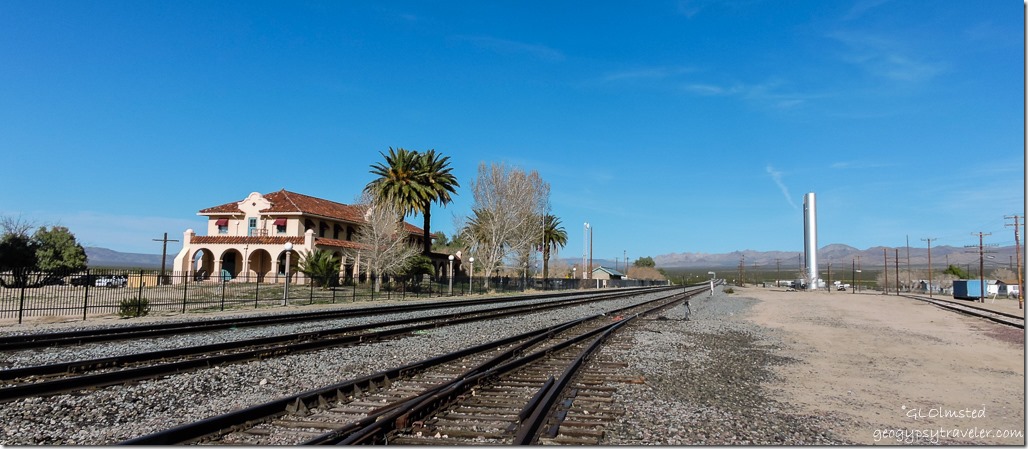 Bill and I woke up early at Death Valley to pack and hit the road for the move to Mojave, first stop Kelso Depot visitor center for information and a Junior Ranger book.
Bill and I woke up early at Death Valley to pack and hit the road for the move to Mojave, first stop Kelso Depot visitor center for information and a Junior Ranger book.
Campgrounds are funny places and great for people watching. But then it was Saturday and weekends seem to draw out a lot of people especially because of the Super Bloom.
 We only had a 110 mile (177 km) drive to enter Mojave National Preserve at Baker, California. The landscape was familiar until we passed Tecopa and then became more sparse. We drove by a BLM ORV Recreation Area called the Dumont Dunes located approximately 31 miles (50 km) north of Baker, California on State Route 127. Not being a fan of loud noisy machines in nature I was glad we’d be able to explore the quiet at Kelso Dunes in the preserve.
We only had a 110 mile (177 km) drive to enter Mojave National Preserve at Baker, California. The landscape was familiar until we passed Tecopa and then became more sparse. We drove by a BLM ORV Recreation Area called the Dumont Dunes located approximately 31 miles (50 km) north of Baker, California on State Route 127. Not being a fan of loud noisy machines in nature I was glad we’d be able to explore the quiet at Kelso Dunes in the preserve.
The town of Baker, “Gateway to Death Valley”, lies on the border of Mojave National Preserve and sports the world’s largest thermometer at 134-foot tall symbolizing the highest temperature in 1913. But it doesn’t have very much else. Limited restaurants, grocery stores and lots of closed hotels. I think this town is dying or dead already.
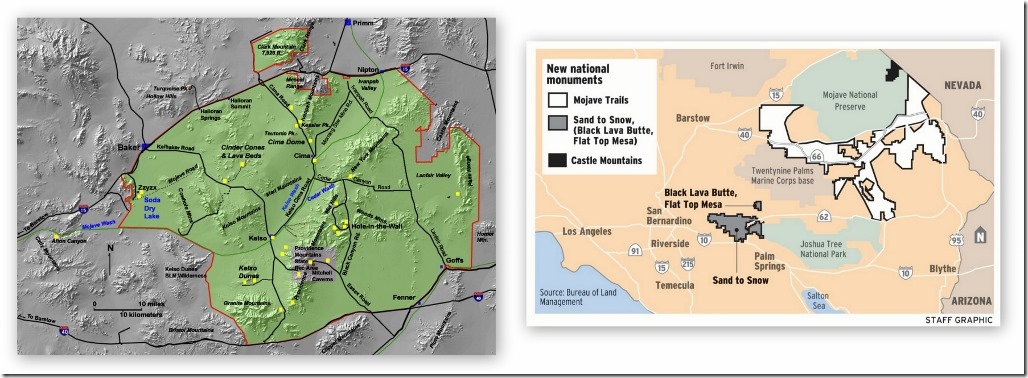 I’ve only driven quickly through parts of this National Park site which surrounds Providence Mountains State Recreation Area, and Mitchell Caverns which is currently closed. And now that President Obama has set aside the three new National Monuments around this area even more protection will be provided.
I’ve only driven quickly through parts of this National Park site which surrounds Providence Mountains State Recreation Area, and Mitchell Caverns which is currently closed. And now that President Obama has set aside the three new National Monuments around this area even more protection will be provided.
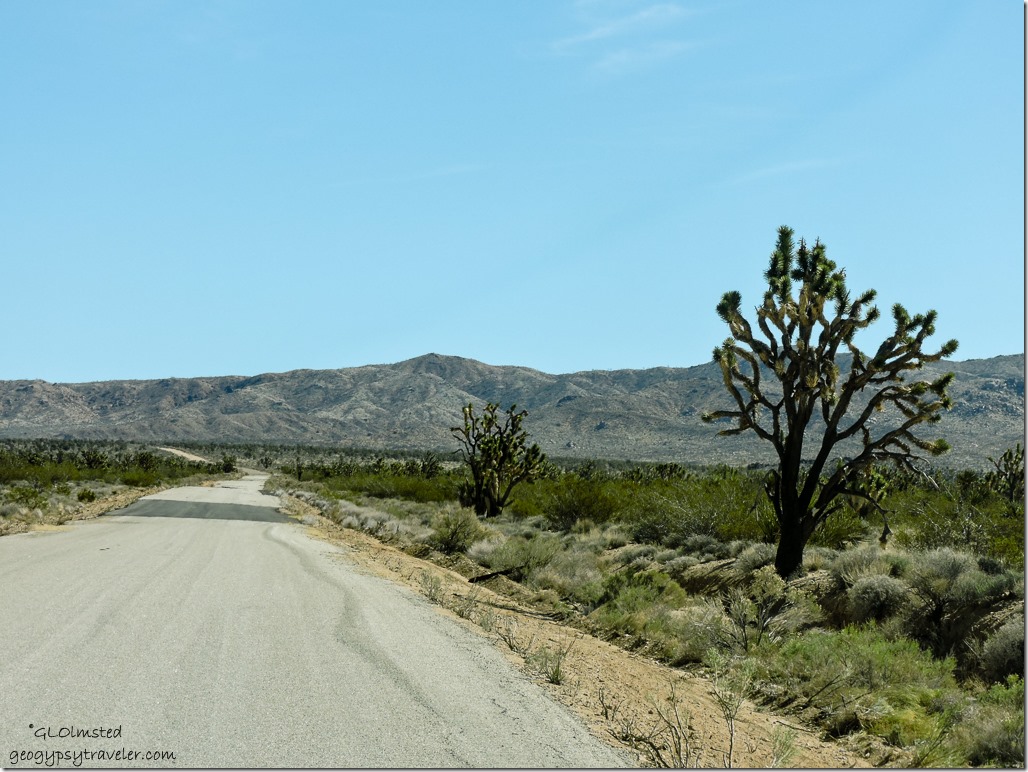 Once in the preserve, the Kelbaker Road took us through a Joshua Tree forest every bit as nice as the national park that bears its name and past Cinder Cone Lava Beds. The road is more hard packed gravel than pavement for the 34 miles (55 km) from Baker to Kelso Depot.
Once in the preserve, the Kelbaker Road took us through a Joshua Tree forest every bit as nice as the national park that bears its name and past Cinder Cone Lava Beds. The road is more hard packed gravel than pavement for the 34 miles (55 km) from Baker to Kelso Depot.
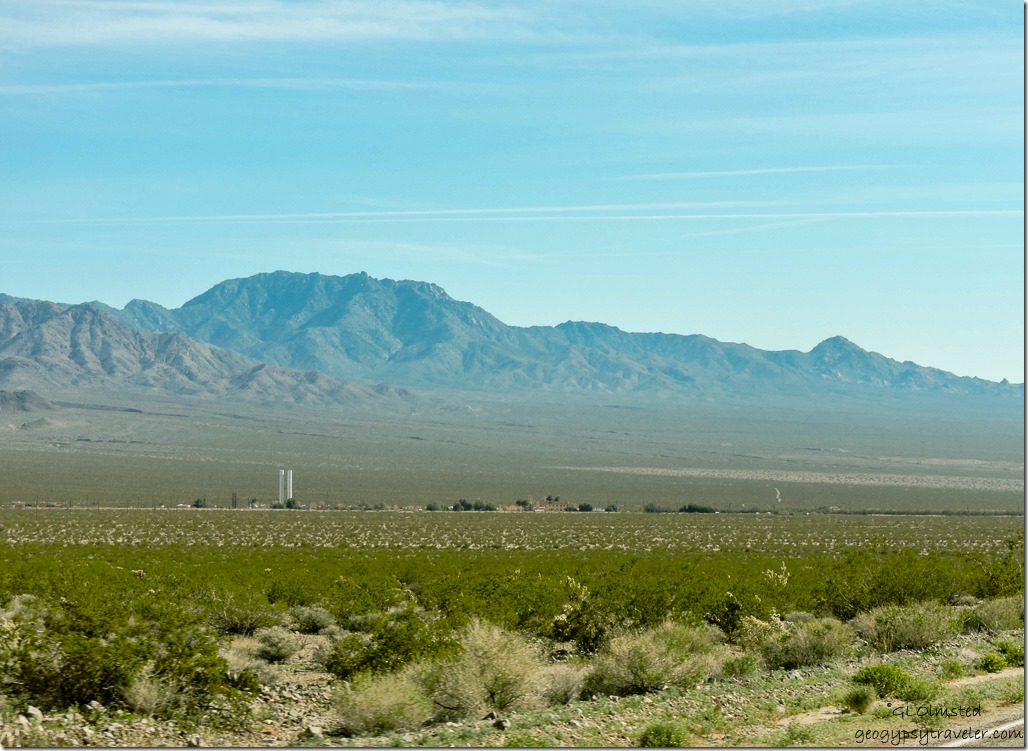 And you can see the depot from a lot of miles away, making us wonder why it was even there. Yet we did see a long line of rail cars far away and I failed to get a photo even when it didn’t stop at the depot.
And you can see the depot from a lot of miles away, making us wonder why it was even there. Yet we did see a long line of rail cars far away and I failed to get a photo even when it didn’t stop at the depot.
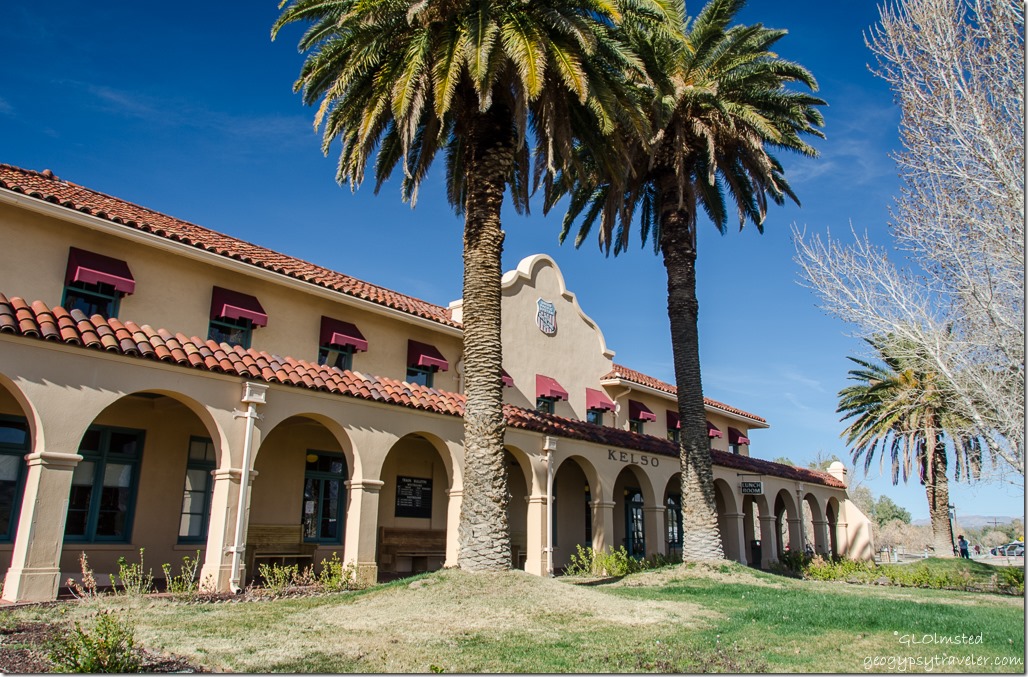 Once the Union Pacific Railroad (UP) reached Portland, Oregon in the 1860s the company turned its attention to California and the ports around Los Angeles. But getting there meant crossing the Mojave Desert. UP partnered with Utah Senator William Clark in 1902 who had begun constructing a line from Los Angles to Salt Lake City. Three years and 235 miles later from Salt Lake siding #16 became known as Kelso after a worker named John Kelso’s name was pulled out of a hat. By the end of that year the line was finished stretching from the west coast port of San Pedro to Salt Lake City and UP bought out Clark.
Once the Union Pacific Railroad (UP) reached Portland, Oregon in the 1860s the company turned its attention to California and the ports around Los Angeles. But getting there meant crossing the Mojave Desert. UP partnered with Utah Senator William Clark in 1902 who had begun constructing a line from Los Angles to Salt Lake City. Three years and 235 miles later from Salt Lake siding #16 became known as Kelso after a worker named John Kelso’s name was pulled out of a hat. By the end of that year the line was finished stretching from the west coast port of San Pedro to Salt Lake City and UP bought out Clark.
Most import was that Kelso had a reliable water source from a spring in the Providence Mountains and the steam locomotives of the era desperately needed water. In addition, extra engines were required to assist locomotives up the 2078 foot (633 m) ascent on the steep two percent grade from Kelso to Kessler Summit (later renamed Cima). So Kelso became the “helper engine” station.
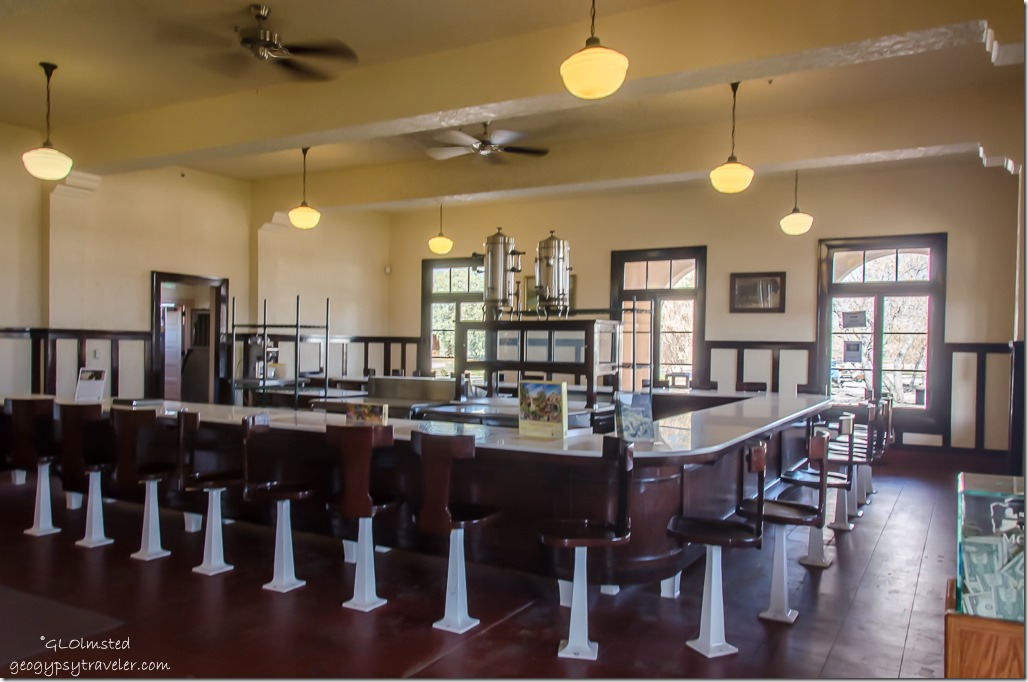 The first depot opened in 1905 followed by a post office, engine house, and eating house to serve railroad employees and passengers. In the early 1920s UP started building new depots designed in the Spanish Mission Revival style in competition with the famous Harvey Houses along the Santa Fe lines. The “Kelso Club House & Restaurant” opened in 1924 and included a conductor’s room, telegraph office, baggage room, dormitory rooms for staff, boarding rooms for railroad crewmen, a billiard room, library, and locker room.
The first depot opened in 1905 followed by a post office, engine house, and eating house to serve railroad employees and passengers. In the early 1920s UP started building new depots designed in the Spanish Mission Revival style in competition with the famous Harvey Houses along the Santa Fe lines. The “Kelso Club House & Restaurant” opened in 1924 and included a conductor’s room, telegraph office, baggage room, dormitory rooms for staff, boarding rooms for railroad crewmen, a billiard room, library, and locker room.
At one time the restaurant operated around the clock and through the mining boom years of the 1940s and ‘50s Kelso’s population grew to nearly 2,000. But eventually mine closures and diesel engines replacing steam left Kelso almost a ghost town.
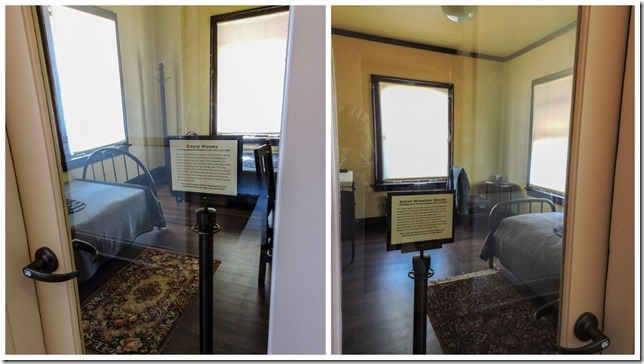 In 1985 UP closed Kelso Depot and began plans to demolish the building. The Kelso Depot Fund saved the building but restoration costs were too steep. By 1992 title has handed over to the BLM (Bureau of Land Management), already managing the land around Kelso as the East Mojave National Scenic Area.
In 1985 UP closed Kelso Depot and began plans to demolish the building. The Kelso Depot Fund saved the building but restoration costs were too steep. By 1992 title has handed over to the BLM (Bureau of Land Management), already managing the land around Kelso as the East Mojave National Scenic Area.
With the passage of the 1994 California Desert Protection Act the area became Mojave National Preserve managed by the National Park Service along with the depot. Depot renovations took from 2002-05. It was closed during my last visit in 2002.
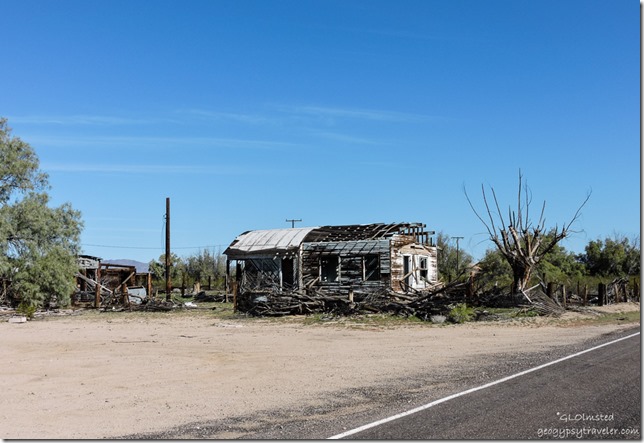 Across the tracks there is modular housing, maybe for staff, and we saw a new building but most of town looked pretty run down.
Across the tracks there is modular housing, maybe for staff, and we saw a new building but most of town looked pretty run down.
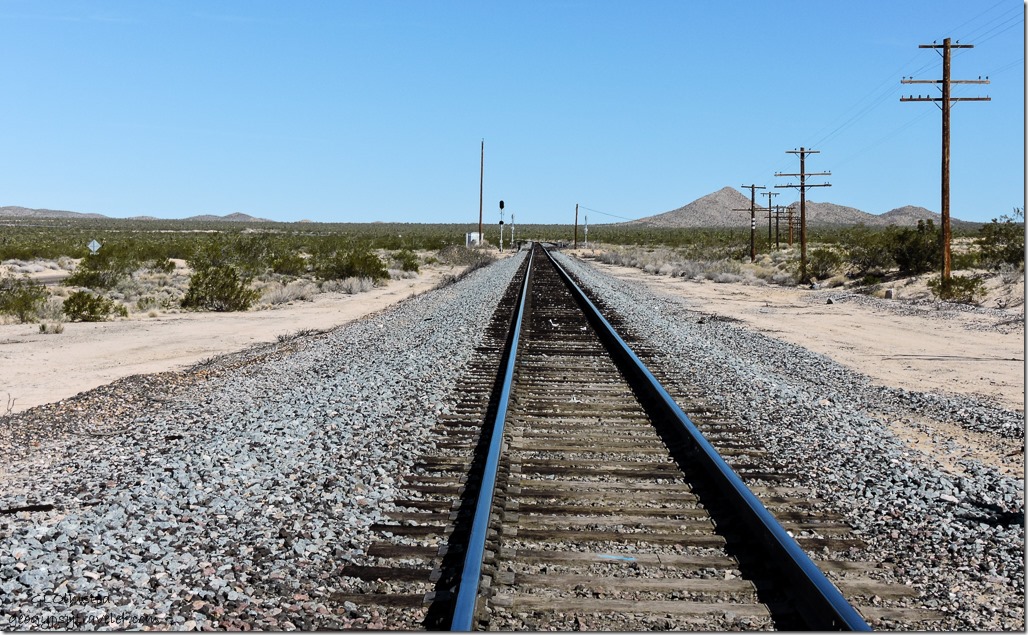 We wandered quickly through the lower floor filled with interpretive displays telling about the history. But we really wanted to get to camp located next to the Kelso Dunes so returned the next morning with more time and some plant and bird questions for the Rangers. Plus I got my Junior Ranger badge, #21.
We wandered quickly through the lower floor filled with interpretive displays telling about the history. But we really wanted to get to camp located next to the Kelso Dunes so returned the next morning with more time and some plant and bird questions for the Rangers. Plus I got my Junior Ranger badge, #21.
Note: March 28 – April 28, 2016 Kelbaker Road closure from Baker to Kelso for planned road work. Can enter 39 miles east on I 15 on the Cima Road instead. 2/22/16 – 3/3/16 the water system at Kelso will be shut down to replace waste system infrastructure. Portable toilets are available; bottled water is available for purchase when the visitor center is open. Check Mojave National Preserve website for current information.

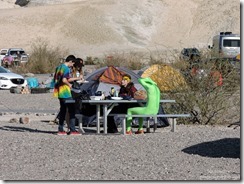
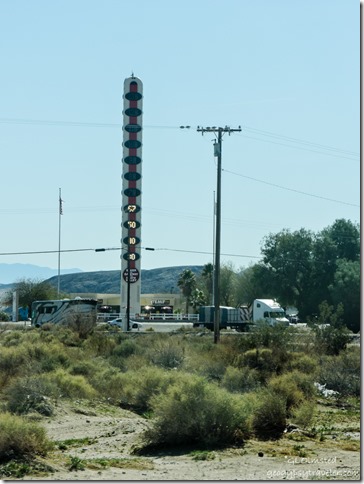
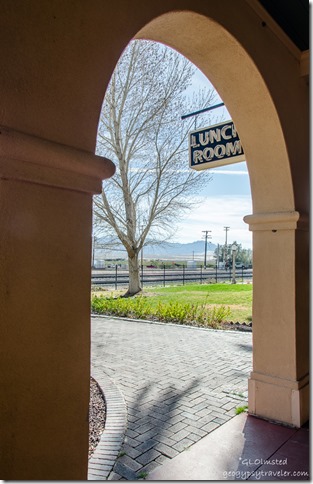
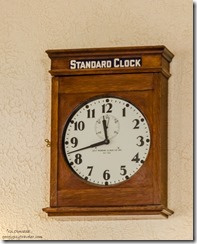
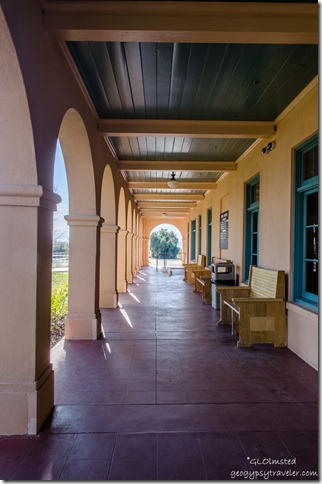
Looks like a nice job of restoring the old restaurant, worth the trip to just sit at an old soda fountain. Are you going to climb the dome?
I wish they still served at the lunch counter. Didn’t climb the dome.
Good news that the road from Baker is being worked on. I drove it in November of last year and it certainly needed some work. The good thing about the bad road was that I saw only one other car during the 34 miles to Kelso whereas the road in from the south was steady traffic.
It was the Vulcan Mine that kept Kelso alive as long as it did after steam engines were replaced with diesel. Iron ore for Kaiser Steel at Kaiser, (Fontana, CA), initially came from Kaiser’s Vulcan Mine, located on the western slope of the Providence Mountains, nine miles south of Kelso, CA
Yea, that road was in pretty bad shape. I presume the mine is closed now with it being in a national park site. But there are a lot of in-holdings here.
We stumbled upon Kelso, and the dunes accidently back in 2013. Had a great time boondocking near the dunes, and visiting the beautifully restored depot. Also, really enjoying your travels.
Thanks Jerry. Mojave still hasn’t been totally discovered by park visitors making it a nice quiet place.
Thanks for sharing a new to me area. They did a great job on the depot.
Another place to add to your list. The depot is beautiful.
I love that old depot building, so classic. Mo and I really enjoyed our time camping in the Mojave Preserve, a special place that so far seems to be off the track, for the time being at least. Hole in the Wall/Rock was beautiful when we were there I think in March.
I fear Mojave will be discovered with the addition of the new monuments. Hole in the Wall was also a great place.
Wonderful piece of history there. Just shows one of the reasons it is a good idea to make lands we want to preserve and the buildings in them part of the National Park System. Glad you got to see it after your shut out last time. Glad I got to see it through you. TWENTY ONE Junior Ranger badges, WOW!!! It’s pretty clear I’ll never catch up.
Park Service does it best. No bias of course. With all the parks you visit I’m sure you could collect Junior Ranger badges pretty quickly.
Love seeing those dunes. The old depot is a well-preserved piece of history. Looks like you could buy a fixer-upper in that town!
The depot is marvelous, not so much the rest of town. Wouldn’t want to live here in the summer. More coming on the dunes.
I don’t know which I love most, trains or old train depots. . .I certainly loved this one! Great post.
Depots for me. But maybe I haven’t traveled enough by train. Thanks.
Great post and history lesson. Thanks for sharing.
Thank you.
Thanks for sharing the photos of the depot. They reminded me a of a fascinating book I purchased in Tucson several years ago, “The Harvey Girls: Women Who Opened the West.” It is a good read, well written and one I would recommend. As I recall, depots were about every 100 miles so the steam engines could take on water. Restaurant employees (women of good standing, ages 18-30) were to serve railroad employees and train riders in 30 minutes or less so that the train could keep on schedule. If you don’t have time to read the book, wikipedia has a brief synopsis on The Fred Harvey Company.
You’re welcome. That was a great book. The Harvey Girls are part of Grand Canyon history, where I work.
Another great post with excellent photos and information. I am learning all the time but the problem is the memory forgets a lot!!! Take care Diane
Thanks Diane. That’s why I write stuff down. So I don’t forget. Or at least can look again. 😉
Fascinating tour, great post.
Thanks Yogi.
How funny to have your family name go down in history because it was pulled out of a hat. Very interesting history of the area and pictures. I don’t remember that Joshua tree forest there, in my mind JTNP was the first time we saw them…but we went to Death Valley years before we went to Joshua Tree. Huh — maybe I was napping? Or we went a different way. So many possibilities — anything might have happened in the days before digital cameras and blogs.
Enjoyed the post a lot.
Thanks Sallie. I hadn’t seen the Joshua Trees at Mojave before either.
I have been to every area on all sides of the depot and have no idea why I haven’t been there yet! Love the history of the place, definitely have to find our way over there. How fun to find Gumby in the desert :-))))
Oh, is that what the guy in green is. 😉
Just loved that old Spanish style train station at Kelso & especially the restaurant that has been left frozen in time. It’s almost as if one can hear all the voices & laughter, tinkling cutlery, people shuffling to & fro with the aroma of hot coffee, bacon & eggs in the air. I will always remember the Kelso Depot & that is where I bought my Mojave Preserve ‘Breezer’ hat that I wear all the time now.
You’re right about the station filled with memories. Bill and I both want to return to Mojave for further exploration. So many places, so little time.